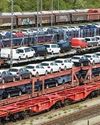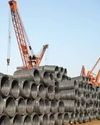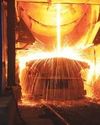
Major car makers saw the sales graph recovering as passenger vehicles sales moved northbound, however, commercial vehicles continues to face headwinds from the domestic market as large buyers, especially fleet owners who are waiting for new-year model change and prebuying in January led by discounts.
During October, passenger vehicle saw a marginal growth of 1.20 percent at 28,447 units while the two-wheeler posted a single digit decline of 9.08 percent at 1,807,720 units last month. It’s the commercial vehicle segment which registered the steepest decline of 25.74 per cent at 61,948 units.
The country’s largest passenger car manufacturer, Maruti Suzuki India (MSI) rose 4.5 percent in October 2019 from the year earlier, the company said as it became the first automobile manufacturer in the country to report growth amid an economic downturn.
Maruti Suzuki’s despatches to dealers stood at 144,277 units in October compared to 138,100 units in the same month last year. Its despatches of passenger vehicles rose 2.3 percent to 139,121, growing for the first time since March. In September, the car maker had reported a 27 percent fall in despatches.
This is the first instance in FY20 where the carmaker has reported positive year-on-year (y-o-y) growth, partly triggered by a surge in festive demand and partly on account of a low base from last year.
It was the only carmaker to report wholesale growth driven by increased despatches of its compact cars, utility vehicles and its light commercial vehicles, even as its entry-level, or the most affordable category, continued to report a y-o-y decline. Maruti Suzuki sells WagonR, Celerio, Swift, Swift Dzire, Baleno and Ignis models in its compact portfolio. Its UVs comprise Vitara Brezza, S-Cross, Ertiga and the recently launched XL6.
This story is from the {{IssueName}} edition of {{MagazineName}}.
Start your 7-day Magzter GOLD free trial to access thousands of curated premium stories, and 9,000+ magazines and newspapers.
Already a subscriber ? Sign In
This story is from the {{IssueName}} edition of {{MagazineName}}.
Start your 7-day Magzter GOLD free trial to access thousands of curated premium stories, and 9,000+ magazines and newspapers.
Already a subscriber? Sign In

Steel's Net Zero mission
The country’s commitment to achieving Net Zero within a targeted timeframe will now propel its steel sector towards a sustainable future in line with global trends.

Fuel Price Hike, Supply Chain Disruption Hurt Festive Sales
Supply chain disruptions and fuel price hikes have hurt festive sales in a big way as most auto majors posted decline in sales in October.

Seaborne coking coal offers remain range-bound
Seaborne coking coal offers moved in a narrow range in October amid global supply tightness and healthy spot demand.

Global crude steel output down 8% in September
China manufactured 74 mt in September, fall of 21% y-o-y while India’s production went up by 7% to 10 mt.

MOIL embarks on expansion projects
“Even though our country is blessed with manganese ore reserves, we import 50% of the domestic requirement. We have to lower our import dependence and save precious foreign exchange.” Ram Chandra Prasad Singh, Steel Minister

Iron ore handled by major ports down 17% in H1
The 12 major Indian ports handled 27 mt of iron-ore during H1 of 2021, down by 17% from 33 mt recorded for the corresponding period of previous year.

Shrinking China output to boost India exports
“In the third quarter of 2021, the company actively responded to the pressure from external policies, such as production curtailment and dual control system on energy consumption and intensity, as well as coal resource shortage and surging prices.” Baoshan Iron and Steel Co Ltd

Indian Railways' iron-ore handling up 25% in H1
Indian Railways in April-September of 2021 (H1) transported 84 mt of iron ore, up by 25% over 67 mt during April-September 2020.

September crude steel production up 7.2% y-o-y
India’s crude steel production in September 2021 grew 7.2 percent to 9.547 million tons (mt) over September 2020 but was down by 3.2 percent from August 2021 output, provisional steel ministry data showed.

“Five enablers: way forward to sustainable cleaner steel”
Right and scalable technology, appropriate policy guidance by government, access to finance to fund transition, willingness of customers to pay for cleaner products and infrastructure for use of new technologies are the need of the hour for the sustainable and cleaner steel industry, according to Madhulika Sharma, Chief Corporate Sustainability, Tata Steel.